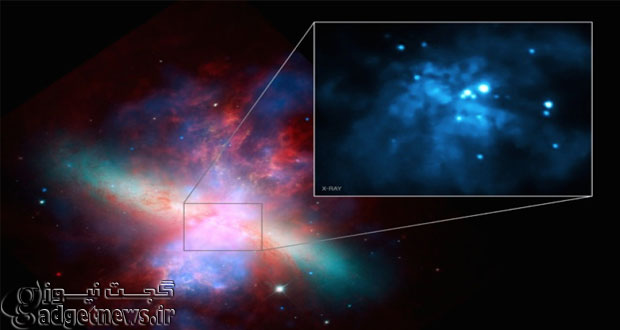دانشمندان موفق به اندازهگیری دقیق و تایید وجود نوعی سیاه چاله نادر شدند.جهان دارای سیاهچالههای زیادی است که شمارش آنها غیرممکن است و شاید 100 میلیون از آنها در کهکشان راه شیری وجود داشته باشند.
تقریبا تمامی سیاهچالهها در دو دسته سیاهچالههای بزرگ و سیاهچالههای غولآسا جای میگیرند.
دانشمندان میدانند سیاهچالههایی دارای جرم 10 تا 100 برابر جرم خورشید بقایای ستارههای در حال مرگ هستند و این که سیاهچالههای فوقعظیمی که جرم آنها بیش از یک میلیون برابر جرم خورشید است، در مرکز اکثر کهکشانها وجود دارند. با این حال در جهان سیاهچالههای معدودی وجود دارند که معماگونه هستند.
اندازهگیری این سیاهچالههای با جرم متوسط که از صد تا چند صد برابر خورشید هستند، به اندازهای دشوار است که حتی اصل وجود آنها نیز همواره محل بحث و مشاجره بوده است. در حال حاضر، اطلاعات بسیار اندکی درباره چگونگی شکلگیری این اجسام وجود دارد و تعدادی از منجمان در شباهت رفتار آنها با رفتار دیگر سیاهچالهها تردید دارند.
هماکنون تیمی از منجمان اندازه دقیق سیاهچالهای با 400 برابر جرم خورشید را در کهکشان مسیه 82 اندازهگیری کردهاند که 12 میلیون سال نوری از زمین فاصله دارد. اندازهگیری دقیق چنین سیاهچالهای به معنای اثبات وجود این جرم کیهانی است.
در حالی که سیاهچاله با جرم متوسط M82 X-1 نخستین جسم کیهانی شناساییشده از این دست نیست، این اولین باری است که جرم آن به دقت اندازهگیری شده است.
منبع: sciencedaily ترجمه:gadgetnews
Fascinating rhythm: Light pulses illuminate a rare black hole
Fascinating rhythm: Light pulses illuminate a rare black hole
But scattered across the universe like oases in a desert are a few apparent black holes of a more mysterious type. Ranging from a hundred times to a few hundred thousand times the sun’s mass, these intermediate-mass black holes are so hard to measure that even their existence is sometimes disputed. Little is known about how they form. And some astronomers question whether they behave like other black holes.
Now a team of astronomers has accurately measured — and thus confirmed the existence of — a black hole about 400 times the mass of our sun in a galaxy 12 million light years from Earth. The finding, by University of Maryland astronomy graduate student Dheeraj Pasham and two colleagues, was published online August 17 in the journal Nature.
Co-author Richard Mushotzky, a UMD astronomy professor, says the black hole in question is a just-right-sized version of this class of astral objects.
“Objects in this range are the least expected of all black holes,” says Mushotzky. “Astronomers have been asking, do these objects exist or do they not exist? What are their properties? Until now we have not had the data to answer these questions.” While the intermediate-mass black hole that the team studied is not the first one measured, it is the first one so precisely measured, Mushotzky says, “establishing it as a compelling example of this class of black holes.”
A black hole is a region in space containing a mass so dense that not even light can escape its gravity. Black holes are invisible, but astronomers can find them by tracking their gravitational pull on other objects. Matter being pulled into a black hole gathers around it like storm debris circling a tornado’s center. As this cosmic stuff rubs together it produces friction and light, making black holes among the universe’s brightest objects.
 گجت نیوز آخرین اخبار گجتی و فناوری های روز دنیا
گجت نیوز آخرین اخبار گجتی و فناوری های روز دنیا 






